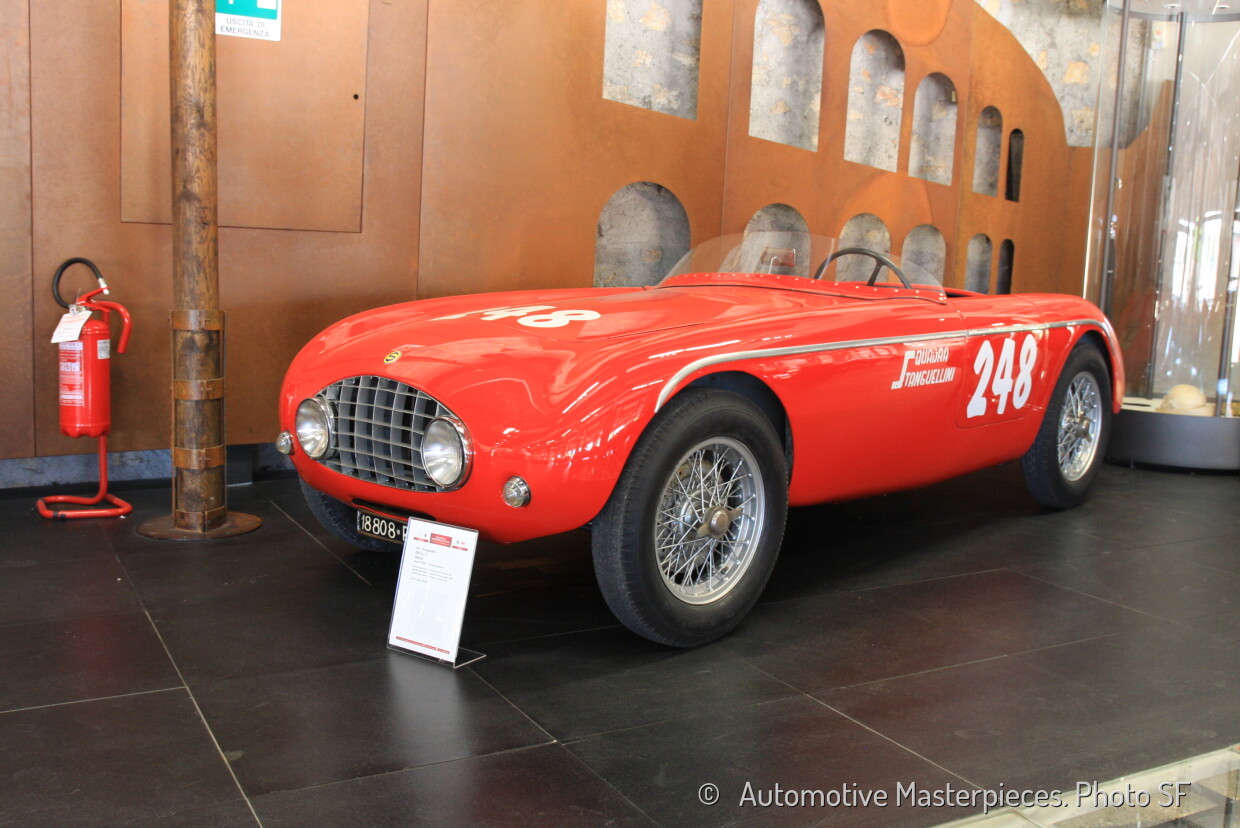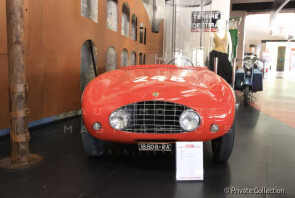
1948 Fiat trasformazione Stanguellini 1100 Sport Internazionale
ON/OFF
Why am I an Automotive Masterpiece?
J. Movie cars
2003 Enzo Ferrari Enzo Ferrari is a 2003 bio-pic based on the book by Enzo Biagi. Starring Sergio Castellitto (Enzo Ferrari). The car appears in the race with the no. 248
L. Limited edition cars
no. 25 manufactured, 7th built
The history of the Stanguellini brand began in 1900 in Modena from the passion of Francesco Stanguellini. In the early years of the twentieth century, the brand grew in importance by participating in motorcycle races and, above all, by dedicating itself to car processing. From 1936, it entered the production of its own models derived from Fiat and Maserati chassis with the 750, 1100, and 2800. In 1937, the first racing team was formed, which began a series of victories, culminating in first place in its class (50th overall) at the XII Mille Miglia in 1938 with a Stanguellini 750, bringing the team to international recognition. From then on, both national and international successes flourished. In the late forties, the company also produced high-tech car chassis and engines. Stanguellini is the perfect postcard of Postwar Italian Renaissance and Ingenuity. The cars achieved significant improvements and results but, at this point in the story, were still barely known as “Stanguellini” and mostly as “derivazione FIAT”. After WWII, the Stanguellini cars were absolute winners. With the changing of the Sport rules, Vittorio Stanguellini could develop his cars again. They were barely the FIATs of the beginning: around a highly reworked aspirated engine, a rigid tubular chassis was built by Gilco on the design of engineer Alberto Massimino. For the bodywork, pure aerodynamics was conceived with attention to the agility of the car: this way, the “Siluro” with motorcycle fenders and the “Barchetta” were born. Every component was reworked. The engine developed from a Single Cam-In-Block with pushrods to a double Overhead Cam. Heads themselves were already changed from cast iron to light alloy. Gentle and inventive, Vittorio always worked in a family-dimension, with men like the foreman-tester Renato Cornia and professionals who were first of all friends. This was happening right in the heart of Modena, in a small cluster of streets, while a few hundred meters away, Ferrari and Maserati were rising to the stars. But, as they say, with great respect for each other.
The Sport with a 1100 cc engine was a car developed by Vittorio Stanguellini in the mid-1930s to compete in the Sport Nazionale category. Starting with a FIAT 508C chassis and engine, Stanguellini built his car according to the rules of the category, but with meticulous attention to detail and blueprinting, incorporating innovative ideas such as moving the engine to the center of the car to improve weight balance and focusing on aerodynamics. After the war, racing resumed. The year 1947 was the golden year for Scuderia Stanguellini: successes multiplied, sometimes even ahead of the powerful Ferraris. The 1100 model was renewed, transitioning from Sport Nazionale to Sport Internazionale. From 1947 to 1957, the small and fast barchettas saw radical and continuous technical evolution: the chassis were entirely made in-house using high-strength steel tubes to achieve good rigidity and reduced weight. The suspensions and the rear axle remained derived from Fiat. In 1949, the first twin-cam head for the 1100 engine was built from scratch, which also required complex modifications to the original Fiat engine block. The twin-cam engines (1100 and 750 cc) became the flagship products of the Modenese manufacturer, for which it is known in the automotive world.
Stanguellini 1100 Sport CS01107 was the 7h car of the postwar Stanguellini production. The most important difference from prewar cars was, as already told, the chassis: not a reworked Fiat unit but a rigid and light steel tube one, “within the workshop” designed and then built by Gilco. CS01107, born with a “Siluro” bodywork in April 1948, began her career as an official team car and was immediately raced in the most competitive fields, like the Mille Miglia or the long and fast Circuito di Pescara. It was in the hands of Aldo Bassi, before, and later of Francesco Montanari. The car ran again the Mille Miglia in 1953. But the car had in the meantime a major changing: in 1950 the “Siluro” shape was discarded and dismantled to rebuild the car in a classic “Barchetta” shape by the Carrozzeria Motto. Under the skin the original 1089cc CS1106 pushrod engine was transformed in the famed DOHC, gaining at least 40% more horsepower, with the same reliability. In excellent condition today, the car is usually exposed in the Stanguellini museum and often in exhibitions like the “2017: 90 anni, 1000 Miglia”.







